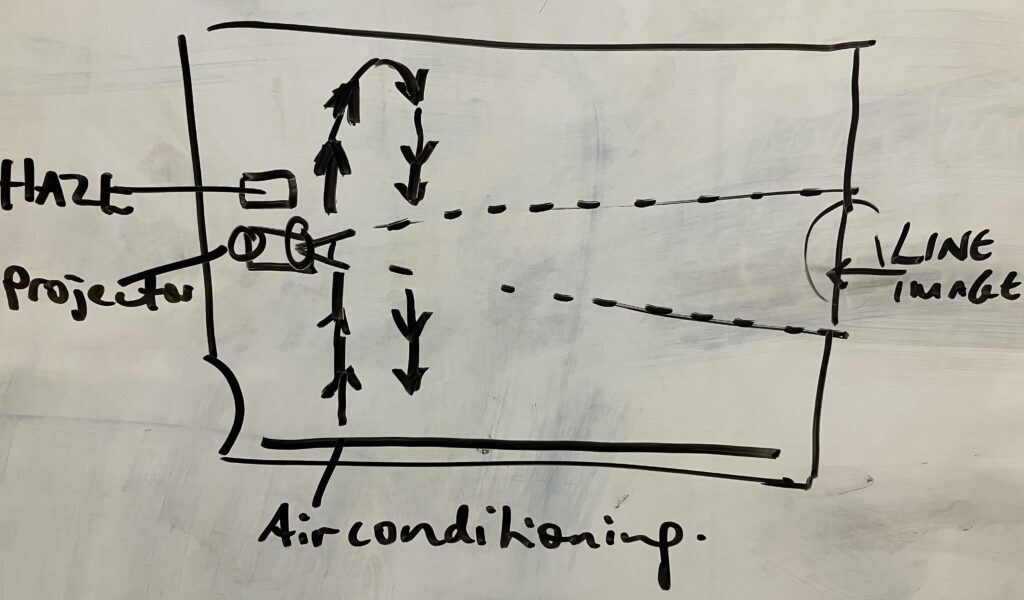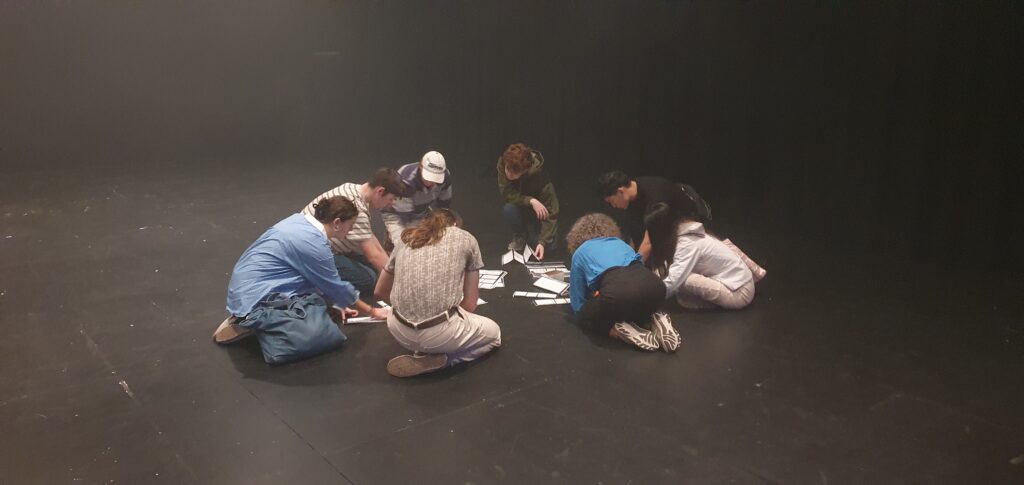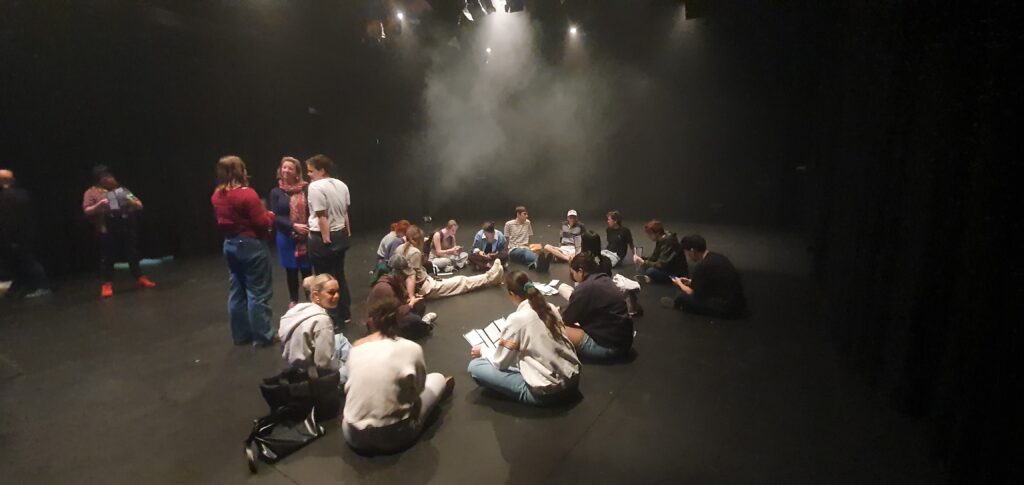What follows is a report back on the event on Sat 20 Sep at the Drill Hall Gallery, Canberra and today in the theatre in room G04 in building 29 at University of Wollongong.
To my mind, both of these events have been a success but in different ways. The black room at UOW was very kind to the work. Using a standard 50mm lens made the line as sharp as possible, there was a slight shine to the black wall which also made the projection stand out. The throw was long (c. 20 m) which felt spacious and gave plenty of room for the audience of students and academics to get into and around the beam.
The order of events at the Drill Hall seems to have helped build a sense of community in the group. Lucas and I introduced the work and that included Lucas talking about building community as part of the point of expanded cinema and our work with re-enactment. There was lots of hubub as the projector rolled. I recall it quietened as the line emerged and started up again as the cone started to become visible.
The students at UOW benefited from the group of about 8 academics who came to see the work. They led the way in moving around the room and interacting with the light beam. I think all of us prodded students to get up and have a look around (I certainly did). So there was still participation in the room but certainly things were silent at the start.
Here’s a bit of a compare and contrast.
projection conditions – the Drill Hall space was a white-walled gallery, 10 metres long. The xenon Eiki had a zoom lens on it. The white room meant incidental light spilling from the top and side of the projector needed to be shrouded. We blocked the top spill with a white paper, next time that would be better in black as the white paper actually created the side spill (I used my blue jacket to block that).
The active air conditioning created swirl across the gallery, clustering the haze near the projector. Some fanning of haze down the path of the projector beam helped with that.
While both of these seem pretty obvious, it’s worth noting these as some new things to think about:
- a white walled room will pick up any spill from the projector
- air conditioning will influence the behaviour of the haze.

I’ve mentioned the sense of community was different. The dot points I’d note there:
- Showing something to ‘warm up’ the audience and create some space before Line Describing for them to talk to each other seemed to work very well at the Drill Hall. In the early SMIC/TLC screenings, that idea of a ‘warm up’ was something we did often, I recall we have used the language ‘sensitising the audience’ to describe it ie doing something to get them in the receptive zone. My super 8s quite often played that role.
- Before the UOW screening, we gave the students the job of folding our new zine about Line Describing. That got them sitting in a circle and interacting with each other but it didn’t get them chatting together in the same way that happened at the Drill Hall.

While that concludes this compare and contrast section, a new idea came out of thinking about creating community in the group before the projectors roll. Lucas and I did discuss that if we do make another performance outdoors, it would be great to plant some things beforehand or maintain some existing plantings to do something towards paying the rent on the carbon footprint.
I also want to note a technical aspect to screening the film by outlining what’s on the print from Lux. It starts with green leader, then goes into a clock leader and two titles, one with Anthony’s name (I think this also has the year 1973), another with the title Line Describing a Cone. Both the clock leader and the titles are sharp, you can confidently use them to check focus.
